I'm a PhD candidate of Computing in the University of Utah with my interest focused on Computer Graphics, Computer Vision. To be more specific, my research revolves around capturing the deformation of non-rigid objects and studying the physics problems arise from it. I am currently advised under Prof. Cem Yuksel, prior to that I was objects by Prof. Ladislav Kavan.
I have interdisciplinary education backgrounds, which covers electric engineering, mathematics and computer science.
I obtained by master's degree of computational mathematics with first class honours from the School of Mathematics
at DLUT. I also won the title of Outstanding Graduate and Outstanding Master Graduation Thesis. Prior to that I have a bachelor's degree of Eletric Engineering at Hunan Univsersity.
Explanation/pronouciation of My Name: Please don't be confused by my first name, "He." Although it looks like a pronoun, it is pronounced as "hə" (similar to "her" without the "r"), which means "prominent" in Chinese. However, I would greatly appreciate it if you could call me by my preferred name, Anka.
| Bachelor of Electrical Engineering and Its Automated | : Hunan University |
| Master of Computational Mathematics | : Dalian University of Technology |
| PhD of Computing | : University of Utah |
My current research topics include:

Offset Geometric Contact
ACM Transactions on Graphics 44(4) [Proceedings of SIGGRAPH], 2025
[Project Page]
[PDF]
[Video]
[Two Minutes Papers]
We present a novel contact model, termed Offset Geometric Contact (OGC), for guaranteed penetration-free simulation of codimensional objects with minimal computational overhead. Our method is based on constructing a volumetric shape by offsetting each face along its normal direction, ensuring orthogonal contact forces, thus allows large contact radius without artifacts. We compute vertex-specific displacement bounds to guarantee penetration-free simulation, which improves convergence and avoids the need for expensive continuous collision detection. Our method relies solely on massively parallel local operations, avoiding global synchronization and enabling efficient GPU implementation. Experiments demonstrate real-time, large-scale simulations with performance more than two orders of magnitude faster than prior methods while maintaining consistent computational budgets.
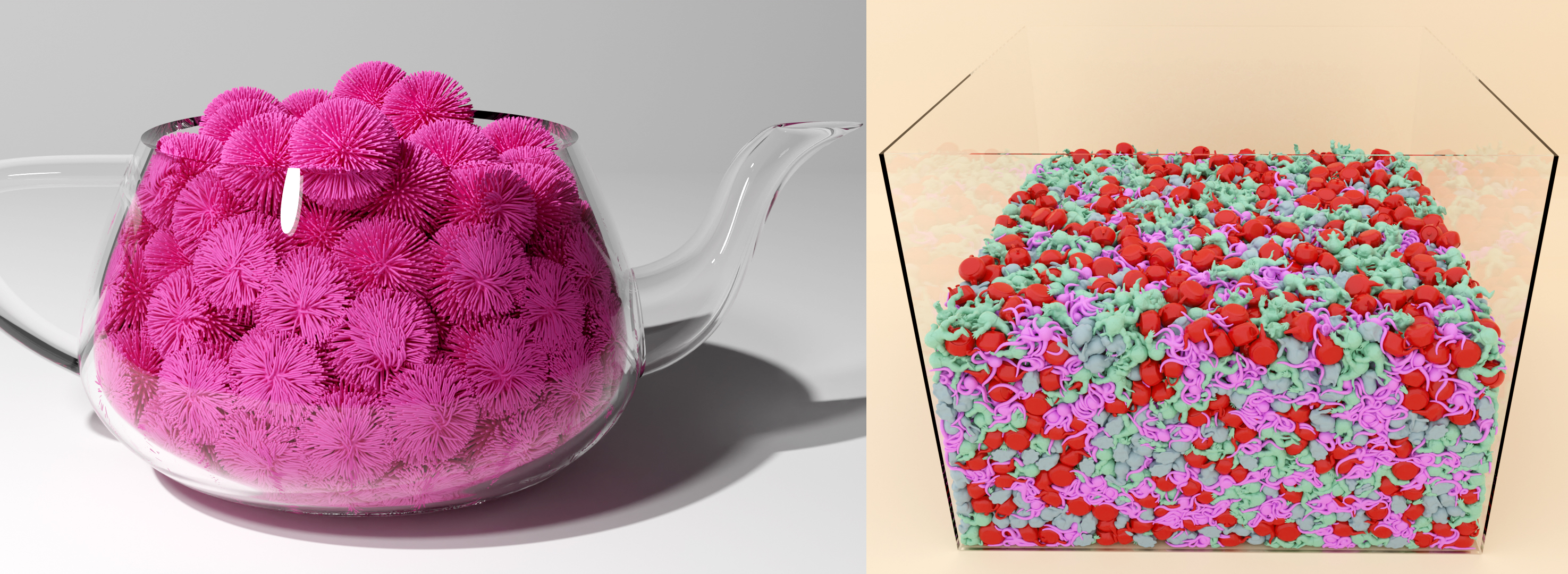
Vertex Block Descent
ACM Transactions on Graphics 43(4) [Proceedings of SIGGRAPH], 2024
[Project Page],
[PDF]
[Video]
[Two Minutes Papers]
[SIGGRAPH Technical Paper Trailer]
We introduce vertex block descent, a block coordinate descent solution for the variational form of implicit Euler through vertex-level Gauss-Seidel iterations. It operates with local vertex position updates that achieve reductions in global variational energy with maximized parallelism. This forms a physics solver that can achieve numerical convergence with unconditional stability and exceptional computation performance. It can also fit in a given computation budget by simply limiting the iteration count while maintaining its stability and superior convergence rate. We present and evaluate our method in the context of elastic body dynamics, providing details of all essential components. Then, we discuss how it can be used for other simulation problems, including particle-based simulations and rigid bodies.
Shortest Path to Boundary for Self-Intersecting Meshes
ACM Transactions on Graphics 42(4) [Proceedings of SIGGRAPH], 2023
[Project Page]
[SIGGRAPH Technical Paper Trailer]
Anka He Chen, Elie Diaz, Cem Yuksel
We introduce a method for efficiently computing the exact shortest path to the boundary of a mesh from a given internal point in the presence of self-intersections. We provide a formal definition of shortest boundary paths for self-intersecting objects and present a robust algorithm for computing the actual shortest boundary path. The resulting method offers an effective solution for collision and self-collision handling while simulating deformable volumetric objects, using fast simulation techniques that provide no guarantees on collision resolution. Our evaluation includes complex self-collision scenarios with a large number of active contacts, showing that our method can successfully handle them by introducing a relatively minor computational overhead.

Capturing Detailed Deformations of Moving Human Bodies
ACM Transactions on Graphics 40(4) [Proceedings of SIGGRAPH], 2021
[Project Page],
[PDF].
Anka He Chen, Hyojoon Park, Kutay Macit, Ladislav Kavan
Our method can capture over 1,000 unique points on the human body using only standard cameras and passive lights, without relying on temporal tracking or prior human body models.
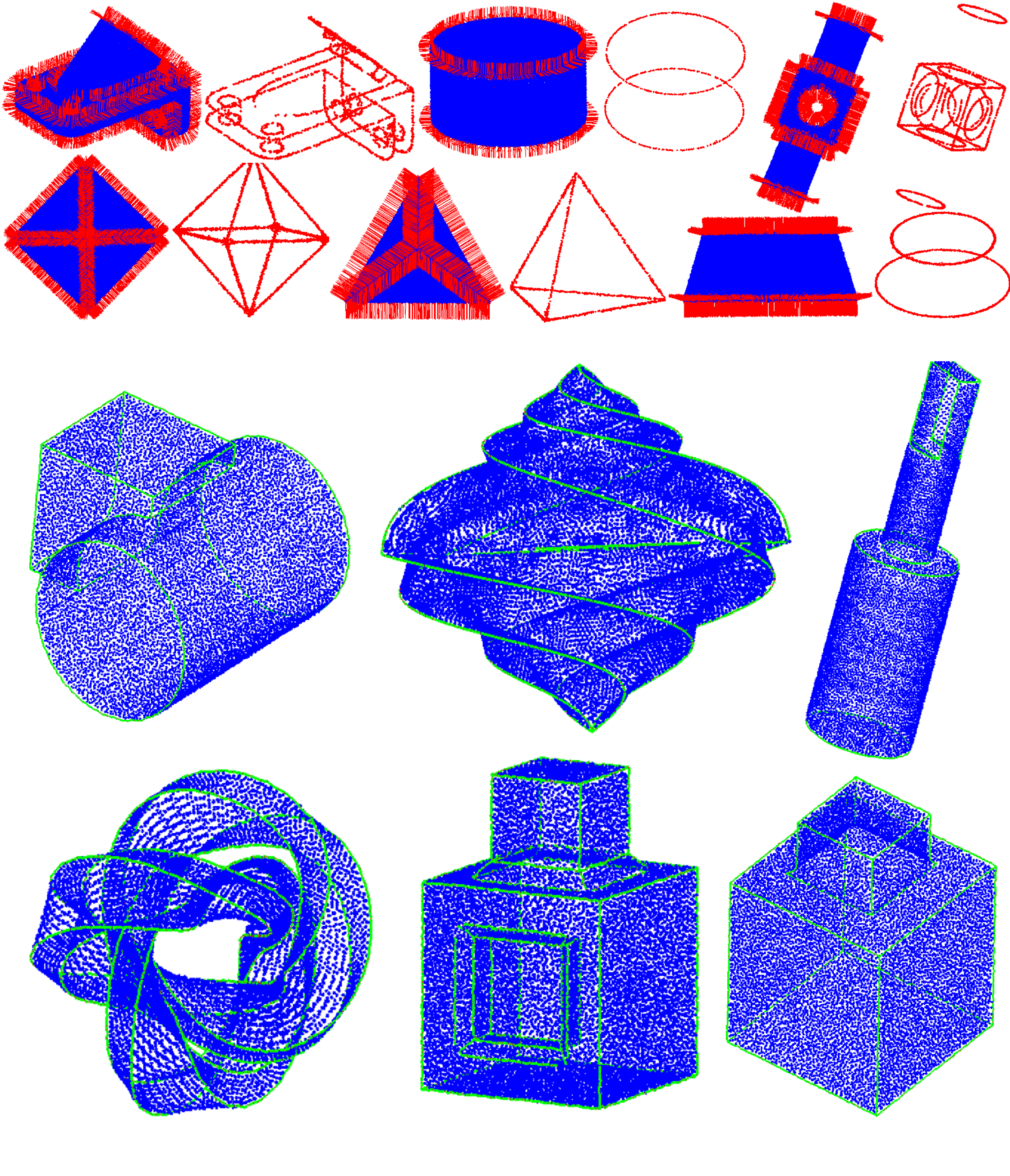
Multi-Normal Estimation via Pair Consistency Voting
IEEE Transactions on Visualization and Computer Graphics(TVCG)
[Page],
[PDF].
Jie Zhang, Junjie Cao (co-first authors), Xiuping Liu, Anka He Chen, Bo Li, Ligang Liu
This paper presents a unified definition for point cloud normal of feature and non-feature points, which allows feature points to possess multiple normals. This definition facilitates several succeeding operations, such as feature points extraction and point cloud filtering. We also develop a feature preserving normal estimation method which outputs multiple normals per feature point. In addition, we introduce an error measure compatible with traditional normal estimators, and present the first benchmark for normal estimation, composed of 152 synthesized data with various features and sampling densities, and 288 real scans with different noise levels.
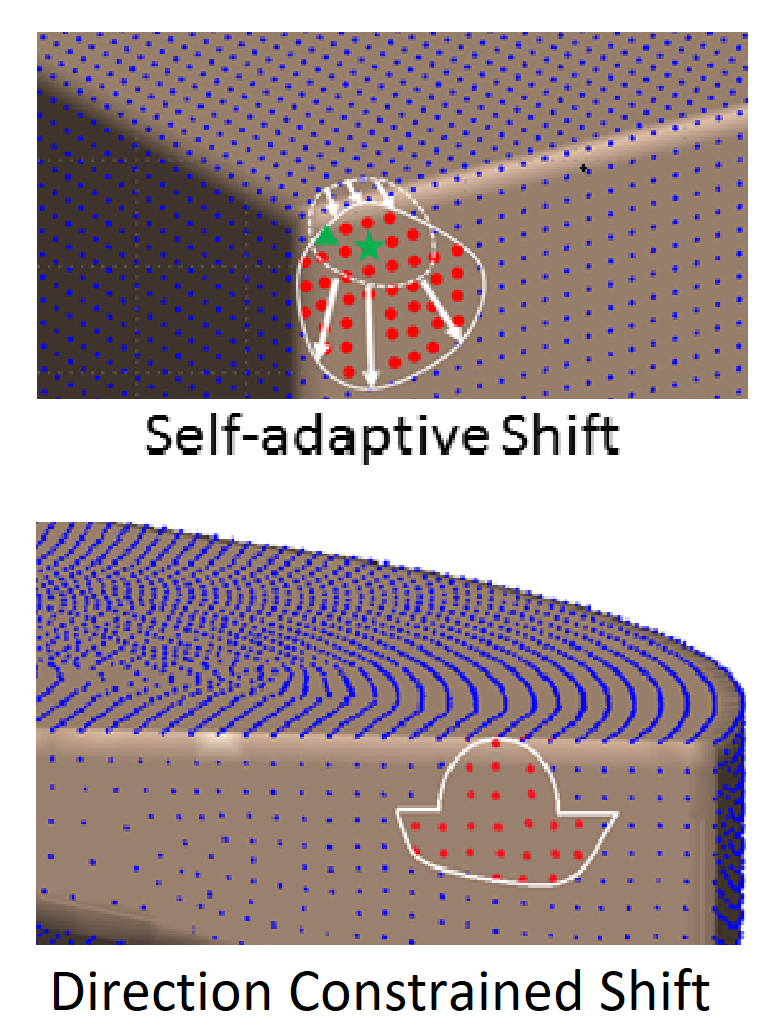
Normal Estimation via Shifted Neighborhood for point cloud
Journal of Computational and Applied Mathematics
[Page],
[PDF].
Junjie Cao, Anka He Chen, Jie Zhang, Yujiao Li, Xiuping Liu, Changqing Zou
We present a fast and quality normal estimator based on neighborhood shift. Instead of using the neighborhood centered at the point, we wish to locate a neighborhood containing the point but clear of sharp features, which is usually not centering at the point. Two specific neighborhood shift techniques are designed in view of the complex structure of sharp features and the characteristic of raw point clouds.
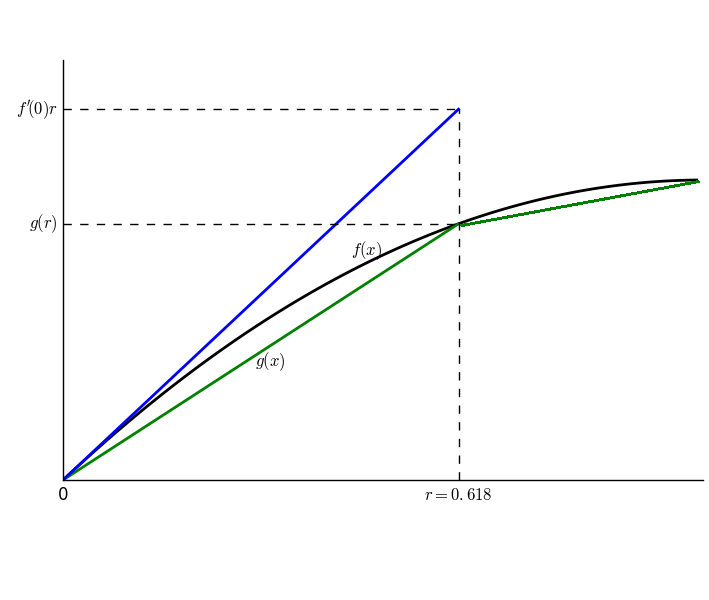
Online Knapsack Problem Under Concave Functions
Frontiers in Algorithmics
[Page],
[PDF].
Xin Han, Ning Ma, Kazuhisa Makino, He Chen
In this paper, we address an online knapsack problem under concave function $f ( x )$, i.e., an item with size x has its profit $f ( x )$. We first obtain a simple lower bound $\max \{q, \frac{f'(0)}{f(1)}\}$ , where $q \approx 1.618$ , then show that this bound is not tight, and give an improved lower bound. Finally, we find the online algorithm for linear function can be employed to the concave case, and prove its competitive ratio is $\frac{f'(0)}{f(1/q)}$ , then we give a refined online algorithm with a competitive ratio $\frac{f'(0)}{f(1)} +1$ . And we also give optimal algorithms for some piecewise linear functions.
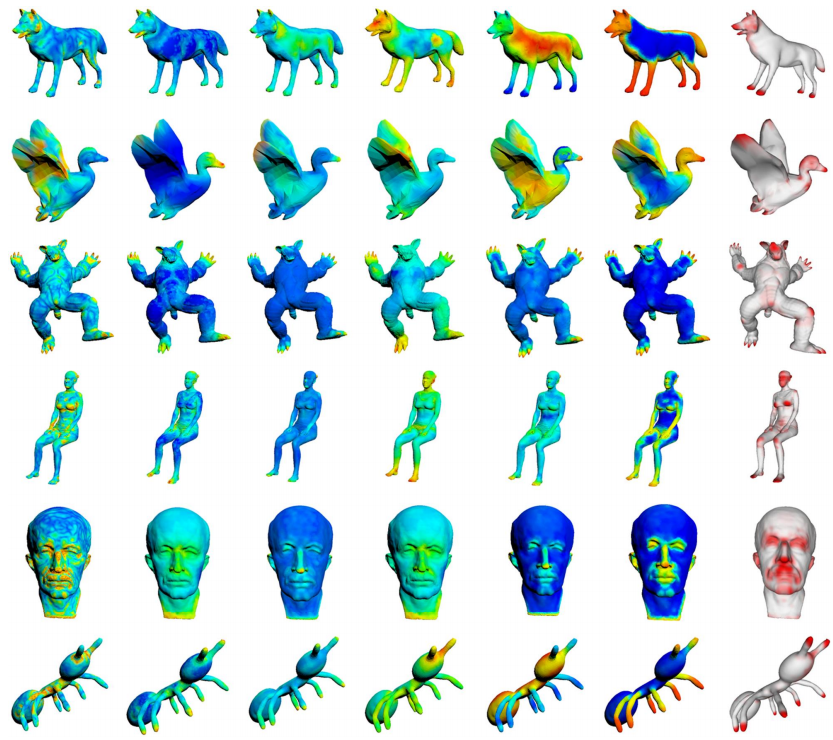
Mesh saliency detection via double absorbing Markov chain in feature space
The Visual Computer
[Page],
[PDF].
Xiuping Liu, Pingping Tao, Junjie Cao, He Chen, Changqing Zou
We propose a mesh saliency detection approach using absorbing Markov chain. Unlike most of the existing methods based on some center-surround operator, our method employs feature variance to obtain insignificant regions and considers both background and foreground cues.
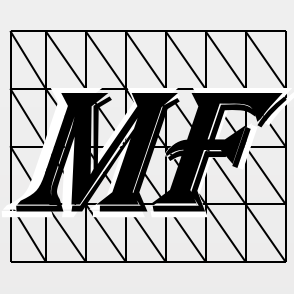
MeshFrame: An efficient header-only mesh processing library [Link]
A open source mesh processing library I developed and maintained as a major contributor, which is a lightweight, efficient, header-only mesh processing framework. Its speed is superior to other state-of-the-art libraries like OpenMesh, MeshLab or CGAL. It supports dynamic mesh structure editing, supports runtime dynamic properties, supports triangle/tetrahedral mesh, with a built-in viewer, and also includes a large number of mesh processing algorithms.
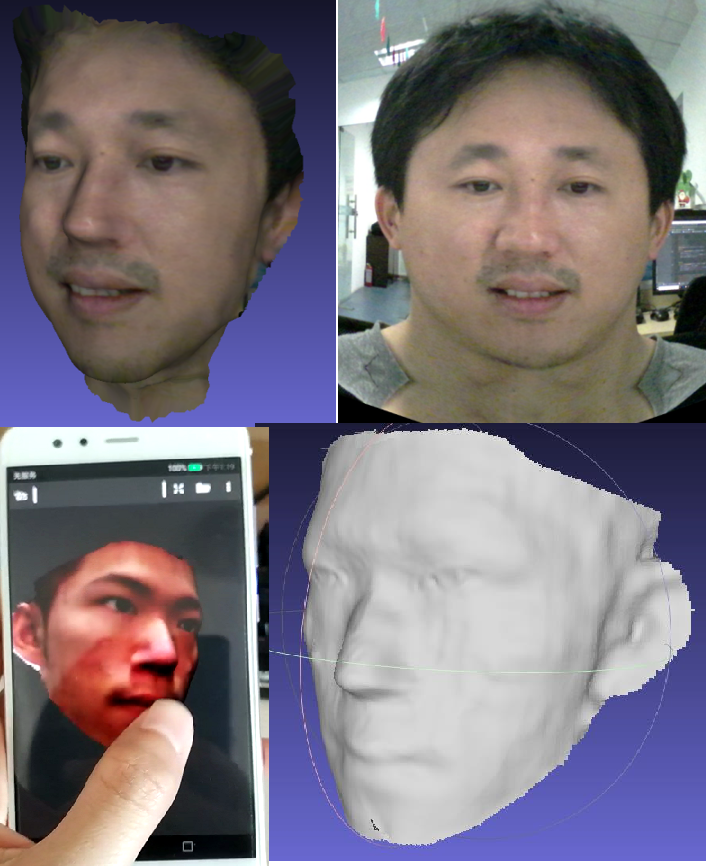
3DFace:A cross-platform face reconstruction application [Link]
I developed a 3D face reconstruction algorithm using a depth camera. Users can be allowed to automatically capture facial data in the process of rotating face in front of the camera, and use multi-frame alignment technology to merge the geometric and texture data from each angle of the human face, and outputs a more complete human face model in a short peroid of time. Both the mobile and the PC versions of this algorithm have been implemented. On PC, the procedure takes 300ms, on mobile phone the procedure takes 3s.
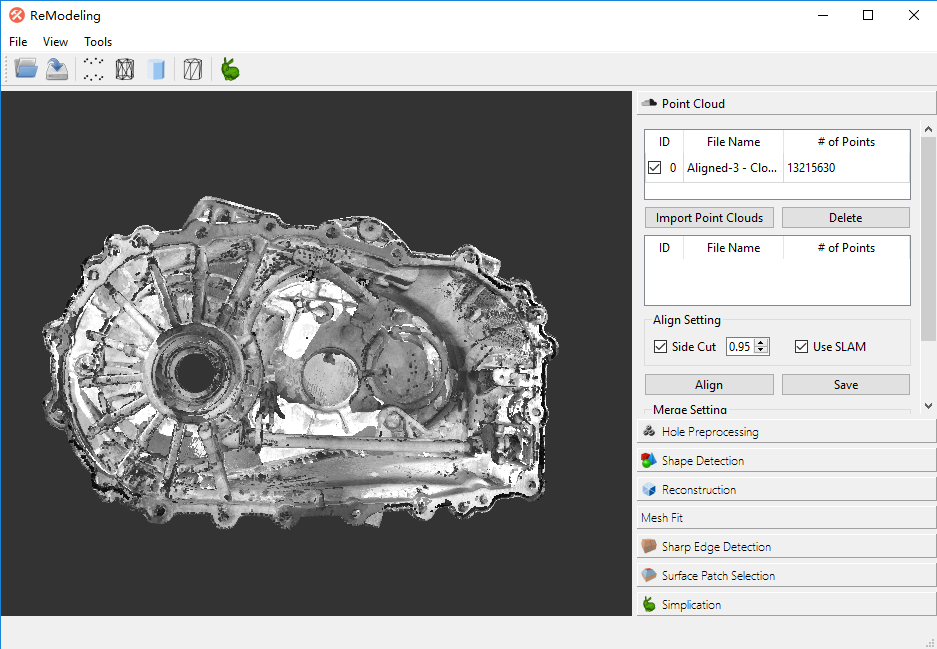
3D scanner data processing software
Developed a software for a 3D scanner, to support point cloud denoising, point cloud manual editing, point cloud alignment, SLAM global optimization, point cloud reconstruction, feature recovery, mesh simplification and other functions, supporting scan data with up to tens of millions of point. In the software development team I am responsible for the implementation of all point cloud processing core algorithms.
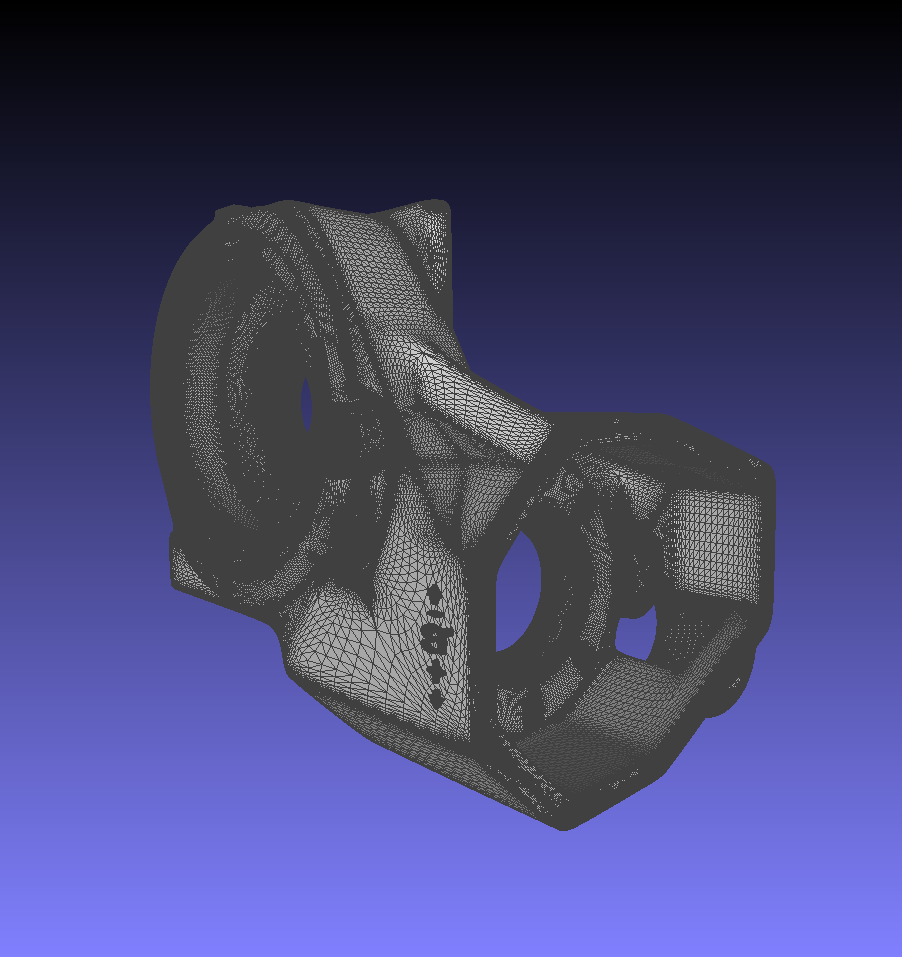
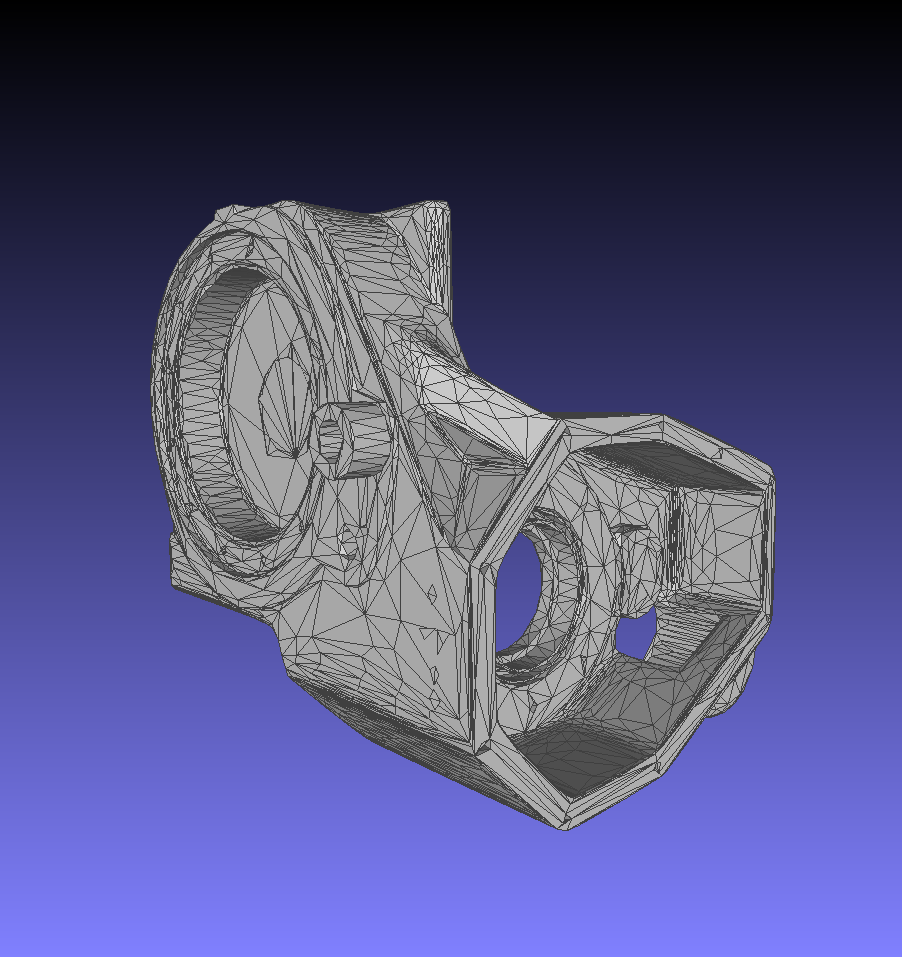
Mesh Simplification
This is a mesh simplification algorithm developed as an application of MeshFrame. The algorithm is based on Quadric Error Metric (QEM). We make use of half-edge collapse method for mesh simplification and modify the QEM to solve the break between different texture coordinates. As far as we know, this is the fastest implementation of QEM based mesh simplification algorithm, even faseter than the one implemented by MeshLab, which is not based on half-edge structure.
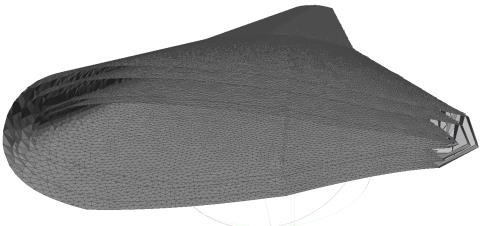
The Wing Surface Modeling and Gridding
Generate the wing surface using B-spline parametric surfaces, mastered the method of parametric surfaces for surface subdivision, and learned to use parametric surface processing software Gmsh.
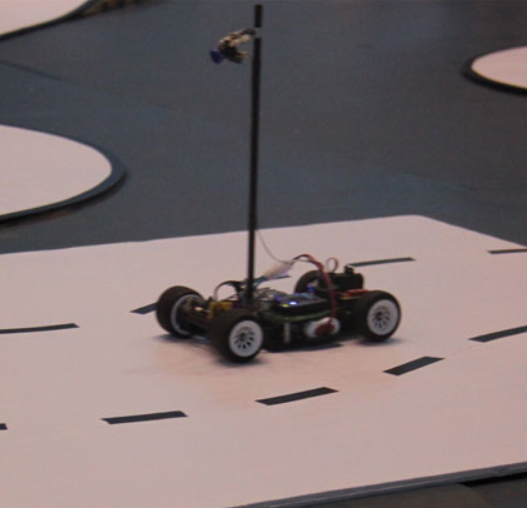
The Smart Car Competition
I took part in the smart car competition. In my group, I mainly in charge of the track detecting and controlling algorithm. I learned a lot knowledge about automatic control, embeded system and image processing algorithm.